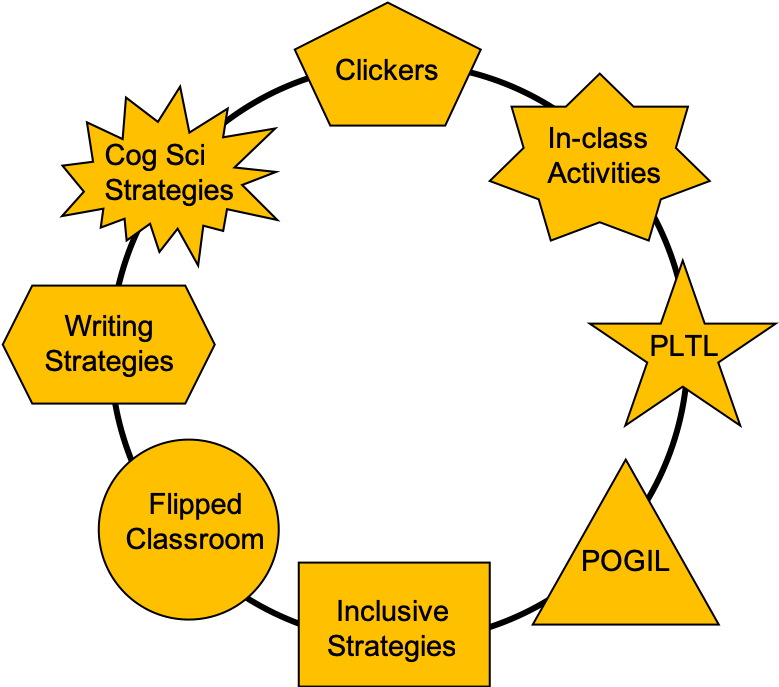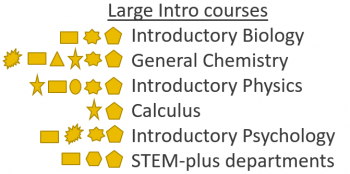As part of our Association of American Universities (AAU) Undergraduate STEM Education Initiative, we promoted a multi-strategy approach for faculty to implement evidence-based learning strategies. CIRCLE supported faculty incorporating these strategies in their courses and evaluated their outcomes. Below are examples of strategies that have been incorporated into STEM courses, especially the introductory courses.
What is evidence-based teaching?
Evidence-based teaching applies strategies taken from peer-reviewed, scholarly studies on teaching and learning. CIRCLE staff members regularly review the latest research in STEM education and cognitive science and conduct evaluative studies of classroom interventions, which are then published. Some examples of evidence-based teaching methods include active learning, promoting a growth mindset, and increasing transparency and structure within courses.
Instead of focusing on a “one-size-fits-all” approach to teaching, CIRCLE utilizes a multiple-strategy approach to integrate evidence-based teaching in the classroom. We want to transform learning environments so that students are more creatively engaged and work with faculty to meet the unique needs of their classroom. We understand that faculty need to integrate evidence-based teaching in ways that match their courses’ learning objectives, their departmental curricula, and their respective teaching styles. This emphasis on flexibility is at the core of our multiple-strategy approach.
How have we integrated evidence-based teaching into the STEM curriculum at Washington University?
We have focused mainly on modifying lower-level STEM courses (the first two years), which is where students have the most difficulty in transitioning from high school to college.
Faculty in introductory courses in biology, chemistry, computer science, physics, mathematics, and psychology have made curricular innovations by integrating evidence-based active-learning pedagogies including collaborative learning and interactive lectures. For example, one strategy is to replace some of a traditional lecture with group work in which students collaborate on a question or problem. By working together, students are forced to improve their own conceptual understanding in order to contribute to the group discussion.
Another approach is to intersperse questions within a more traditional lecture format to check for understanding, promote retrieval practice, and better engage student attention. This interactive-engagement approach, which may include clicker questions, can deepen student learning during class sessions. You can find out more about the use of iClickers during lectures by clicking here.
This work has continued through the HHMI Inclusive Excellence grant, with a focus on incorporating inclusive strategies in these courses. If you would like to learn more about specific classroom projects, please visit CIRCLE’s STEM Studies and Interventions.

